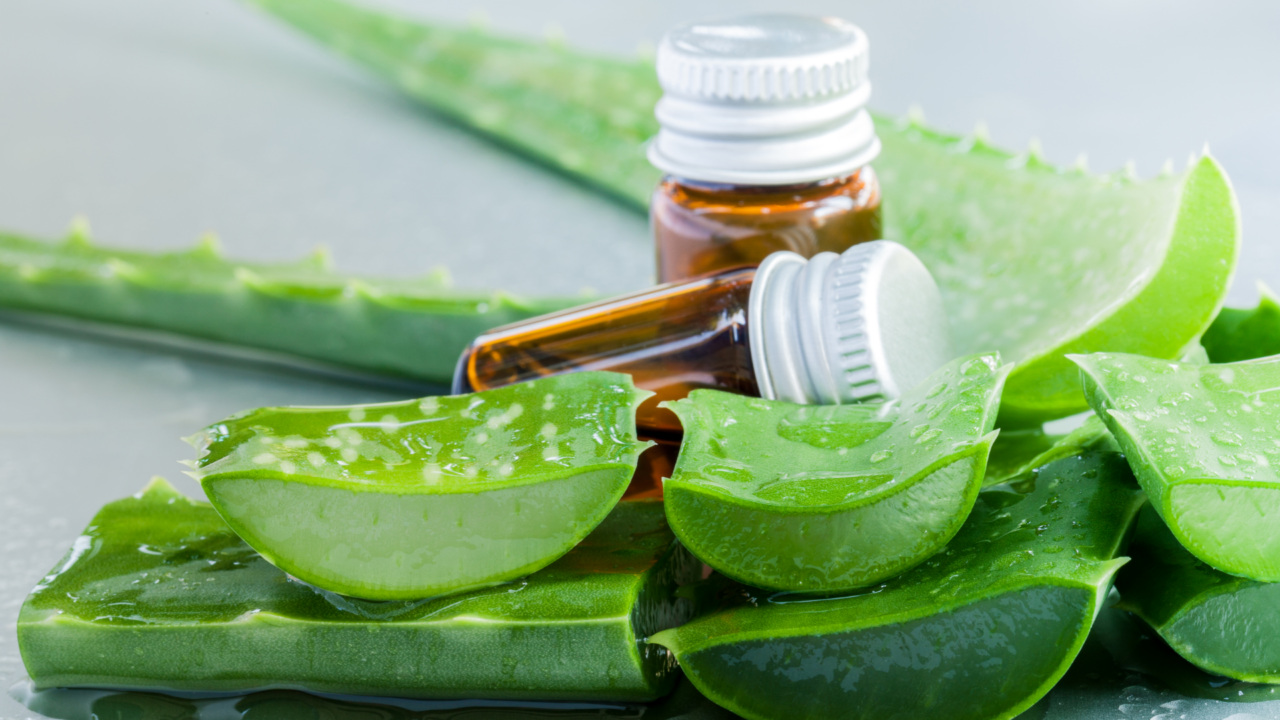Table of Contents
ToggleDiscovering the Essence of Best WellHealthOrganic Home Remedies Tag
10 Best WellHealthOrganic Home Remedies Tag: In today’s fast-paced world, health concerns often lead individuals to explore natural alternatives for maintaining their well-being. WellHealthOrganic, a comprehensive approach to wellness, emphasizes the use of home remedies derived from organic sources. These remedies offer a plethora of benefits, combining natural healing properties with affordability and accessibility.
Benefits of Best WellHealthOrganic Home Remedies Tag

Natural Healing Properties
One of the primary advantages of WellHealthOrganic home remedies is their reliance on natural ingredients. These remedies harness the power of nature’s elements, such as herbs, plants, and organic substances, to promote healing without the side effects commonly associated with synthetic medications.
Cost-Effectiveness
Unlike pharmaceutical drugs that often come with a hefty price tag, WellHealthOrganic home remedies are cost-effective. Most ingredients used in these remedies are readily available, allowing individuals to address health issues without straining their budgets.
Accessibility and Convenience
Another remarkable aspect of WellHealthOrganic remedies is their accessibility. These remedies can be prepared at home using simple ingredients found in local markets or even in one’s kitchen. This accessibility makes them a convenient option for maintaining health and wellness.
See Also: Skin Care In Hindi WellHealthOrganic
Top 10 Best WellHealthOrganic Home Remedies Tag

Here are 10 effective home remedies from Well Health Organic:
- Honey and Lemon for Sore Throat
- Ginger Tea for Nausea
- Turmeric Milk for Inflammation
- Apple Cider Vinegar for Digestion
- Coconut Oil Pulling for Oral Health
- Peppermint Oil for Headaches
- Aloe Vera for Sunburn
- Oatmeal Bath for Skin Irritation
- Eucalyptus Steam for Congestion
- Chamomile Compress for Eye Irritation
1. Honey and Lemon for Sore Throat:
Using honey and lemon for a sore throat is a popular home remedy. Here’s how you can prepare it:
Ingredients:
- 1 tablespoon of honey
- 1/2 fresh lemon
- 1 cup of warm water
Instructions:
- Squeeze the juice from half a lemon into a cup of warm water.
- Add 1 tablespoon of honey to the lemon-infused warm water.
- Stir the mixture until the honey dissolves completely.
- Gargle with this solution for soothing relief from a sore throat.
Remember, this remedy can be repeated several times a day as needed for relief from throat discomfort.
2. Ginger Tea for Nausea:
Here’s a simple recipe to make ginger tea, which is known to help ease nausea:
Ingredients:
- 1-2 inches of fresh ginger root
- 1-2 cups of water
- Honey or lemon (optional, for taste)
Instructions:
- Peel the ginger root and slice it into thin pieces or grate it.
- Boil 1-2 cups of water in a pot.
- Add the sliced or grated ginger to the boiling water.
- Reduce the heat and let the ginger simmer in the water for about 5-10 minutes to infuse the flavor.
- If desired, strain the tea to remove the ginger pieces.
- Optionally, add honey or lemon for taste.
- Sip the ginger tea slowly to help alleviate nausea.
This ginger tea can be consumed whenever you’re experiencing nausea or digestive discomfort. Adjust the strength of the tea according to your preference by varying the amount of ginger and steeping time.
3. Turmeric Milk for Inflammation: WellHealthOrganic Home Remedies Tag
Here’s a recipe for turmeric milk, also known as “golden milk,” which is believed to help reduce inflammation:
Ingredients:
- 1 cup of milk (dairy or plant-based)
- 1/2 to 1 teaspoon of ground turmeric
- 1/4 teaspoon of ground cinnamon (optional)
- A pinch of black pepper
- Sweeteners such as honey or maple syrup (optional, to taste)
Instructions:
- Pour the milk into a small saucepan and heat it over medium heat.
- Add the turmeric, ground cinnamon (if using), a pinch of black pepper, and any sweetener of your choice.
- Stir the mixture continuously while heating. Do not let it come to a boil.
- Continue to heat the turmeric milk for about 3-5 minutes, ensuring all the ingredients are well combined.
- Once heated to your liking, remove the saucepan from the heat.
- Strain the turmeric milk through a fine sieve to remove any larger particles if desired.
- Allow the golden milk to cool slightly before drinking.
You can enjoy turmeric milk as a soothing drink before bedtime or at any time of the day to potentially help reduce inflammation. Adjust the amount of turmeric and sweetness according to your taste preferences.
4. Apple Cider Vinegar for Digestion:
Here’s how you can use apple cider vinegar to potentially aid digestion:
Ingredients:
- 1 tablespoon of raw, unfiltered apple cider vinegar
- 1 cup of water
- Optional: Honey or a sweetener to taste
Instructions:
- Mix 1 tablespoon of raw, unfiltered apple cider vinegar with 1 cup of water.
- If desired, add a small amount of honey or a sweetener to improve the taste.
- Stir the mixture thoroughly until well combined.
Usage:
- Drink this diluted apple cider vinegar solution before meals to potentially aid digestion.
- Consume it about 15-20 minutes before eating to allow time for the vinegar to stimulate digestive juices.
Note: It’s essential to dilute apple cider vinegar before consuming it, as undiluted vinegar can be harsh on the esophagus and tooth enamel. Additionally, it’s advisable to start with smaller amounts and gradually increase as per your tolerance. If you have any digestive issues or medical conditions, consult your healthcare provider before using apple cider vinegar regularly.
5. Coconut Oil Pulling for Oral Health:
Coconut oil pulling is a traditional remedy believed to promote oral health. Here’s how to do it:
Ingredients:
- 1 tablespoon of organic coconut oil (unrefined, cold-pressed)
Instructions:
- Take 1 tablespoon of organic coconut oil.
- Put the coconut oil in your mouth.
- Swish the oil around in your mouth for about 15 to 20 minutes.
- Spit out the oil into a trash can or disposable container. Do not spit it into the sink to prevent clogging pipes.
- Rinse your mouth thoroughly with warm water.
- Follow by brushing your teeth as usual.
Usage:
- Perform coconut oil pulling once a day in the morning before eating or drinking anything.
- Start with a shorter duration if 15-20 minutes feels too long initially; you can gradually increase the time as you get used to it.
Coconut oil pulling is believed to help in reducing harmful bacteria in the mouth, promoting fresher breath, and potentially contributing to improved oral hygiene. However, it’s important to note that while this practice is generally considered safe, it’s not a replacement for regular brushing, flossing, and professional dental care. If you have any concerns or oral health conditions, consult with your dentist before starting oil pulling.
6. Peppermint Oil for Headaches: Best WellHealthOrganic Home Remedies Tag
Here’s how you can use peppermint oil to potentially help alleviate headaches:
Ingredients:
- Peppermint essential oil
- Carrier oil (such as coconut oil, almond oil, or olive oil)
Instructions:
- Take a small amount of carrier oil (about a teaspoon) and mix it with a few drops of peppermint essential oil.
- Gently massage this diluted peppermint oil onto your temples, forehead, and the back of your neck.
- Use your fingertips to apply the oil in gentle, circular motions.
- Be careful to avoid contact with your eyes or any sensitive areas.
Usage:
- Apply the diluted peppermint oil to the affected areas at the onset of a headache or migraine.
- You can reapply the oil every 15-30 minutes as needed for relief.
- If you experience any irritation or discomfort, discontinue use and wash the area with mild soap and water.
Peppermint oil contains menthol, which is believed to have a cooling effect and may help alleviate headache symptoms. However, individual responses to essential oils can vary, so it’s advisable to perform a patch test before using it extensively and consult with a healthcare professional, especially if you have any allergies or medical conditions.
7. Aloe Vera for Sunburn: WellHealthOrganic Home Remedies Tag
Here is a guide on how to use aloe vera for soothing sunburn:
Ingredients:
- Aloe vera leaf or pure aloe vera gel (store-bought)
Instructions:
- If using an aloe vera leaf, carefully cut off a portion of the leaf.
- Extract the gel by slicing open the leaf or scooping out the gel using a spoon.
- Apply the pure aloe vera gel directly onto the sunburned skin.
- Gently massage the gel into the affected area until it’s absorbed.
- Allow the aloe vera gel to dry on the skin.
Usage:
- Reapply the aloe vera gel multiple times a day, especially after showering or when the skin feels dry.
- Continue applying until the sunburn begins to heal and the discomfort reduces.
- Store any unused portion of the aloe vera leaf or gel in the refrigerator for future use.
Aloe vera is renowned for its soothing and cooling properties, which can help alleviate the pain and redness associated with sunburns. It also assists in moisturizing the skin and promoting healing. If you experience severe sunburn or if the condition worsens, it’s advisable to seek medical advice.
8. Oatmeal Bath for Skin Irritation:
Certainly! Here’s a simple guide on how to prepare an oatmeal bath for soothing skin irritation:
Ingredients:
- 1 cup of colloidal oatmeal or finely ground oats
- Bathtub filled with warm water
Instructions:
- Fill your bathtub with warm (not hot) water.
- Add 1 cup of colloidal oatmeal or finely ground oats directly to the running water.
- Use your hand to stir the water and oats to ensure they dissolve and disperse evenly.
- Soak in the oatmeal-infused bath for about 15 to 20 minutes.
Usage:
- Gently soak in the oatmeal bath, allowing the water to soothe the irritated skin.
- Pat your skin dry with a soft towel after bathing, avoiding rubbing, which can further irritate sensitive skin.
- Moisturize your skin afterward with a gentle, fragrance-free moisturizer.
Oatmeal baths are known for their ability to calm and relieve various skin irritations such as itching, rashes, sunburn, eczema, and allergic reactions. However, if the irritation persists or worsens, or if you have any concerns about your skin condition, consult with a dermatologist or healthcare professional.
9. Eucalyptus Steam for Congestion:
Here’s a guide on how to use eucalyptus steam to help relieve congestion:
Ingredients:
- Boiling water
- 3-5 drops of eucalyptus essential oil
Instructions:
- Boil water in a pot or kettle.
- Pour the boiling water into a heatproof bowl or basin.
- Add 3-5 drops of eucalyptus essential oil to the hot water. Adjust the number of drops based on your sensitivity to the oil.
- Lean over the bowl, keeping a safe distance to avoid burns, and drape a towel over your head to create a tent-like effect, trapping the steam.
Usage:
- Inhale the steam deeply and slowly for about 5-10 minutes.
- Breathe in through your nose and out through your mouth to allow the eucalyptus-infused steam to help clear congestion.
- Be cautious not to get too close to the hot water to prevent burns.
The eucalyptus steam can help open up nasal passages and provide relief from congestion due to colds or sinus issues. It’s important to ensure you’re comfortable with the steam’s temperature and avoid getting too close to prevent any risk of burns. If you experience any discomfort or have respiratory conditions, consult a healthcare professional before using this method.
10. Chamomile Compress for Eye Irritation:
Here is a guide on how to make a chamomile compress to help soothe eye irritation:
Ingredients:
- 1-2 chamomile tea bags or loose chamomile flowers
- 1 cup of hot water
- Clean washcloth or cotton pads
Instructions:
- Steep 1-2 chamomile tea bags or a handful of loose chamomile flowers in 1 cup of hot water. Let it steep for about 5-10 minutes.
- Remove the tea bags or strain the flowers from the liquid. Allow the chamomile infusion to cool to a comfortable temperature.
- Once cooled, soak a clean washcloth or cotton pads in the chamomile-infused liquid.
- Gently wring out the excess liquid from the cloth or pads.
- Lie down and place the damp cloth or pads over your closed eyes.
- Relax and leave the compress on your eyes for about 10-15 minutes.
Usage:
- Use this chamomile compress for eye irritation as needed, several times a day if desired, until the irritation subsides.
- Ensure that the chamomile infusion is not too hot to avoid discomfort or burns to the delicate skin around the eyes.
Chamomile possesses anti-inflammatory and soothing properties that may help alleviate eye irritation, redness, or puffiness. However, if eye irritation persists or worsens, or if you experience any adverse reactions, it’s advisable to seek advice from an eye care professional or healthcare provider.
Conclusion: Best WellHealthOrganic Home Remedies Tag

In conclusion, these natural home remedies offer accessible and potentially beneficial solutions to various health concerns. From using honey and lemon for sore throats to employing eucalyptus steam for congestion, each remedy taps into the healing properties of natural ingredients.
These remedies include:
- Honey and Lemon for Sore Throat: A soothing combination to ease throat irritation.
- Ginger Tea for Nausea: An infusion to calm an upset stomach.
- Turmeric Milk for Inflammation: A warm drink with potential anti-inflammatory properties.
- Apple Cider Vinegar for Digestion: Diluted ACV to aid digestion.
- Coconut Oil Pulling for Oral Health: Swishing coconut oil for oral hygiene.
- Peppermint Oil for Headaches: Topical application for tension relief.
- Aloe Vera for Sunburn: Application of aloe vera gel for sunburn relief.
- Oatmeal Bath for Skin Irritation: Soaking in an oatmeal-infused bath for soothing skin irritation.
- Eucalyptus Steam for Congestion: Inhaling steam infused with eucalyptus oil for clearing congestion.
- Chamomile Compress for Eye Irritation: Using chamomile-infused compresses to soothe eye irritation.
While these remedies are often considered safe, individual responses may vary. It’s essential to practice caution, especially if you have allergies or specific medical conditions. Always consult a healthcare professional before trying new remedies, especially if symptoms persist or worsen. These home remedies can complement standard treatments but should not replace professional medical advice or treatments prescribed by healthcare providers.
FAQs: Best WellHealthOrganic Home Remedies Tag
A commonly used home remedy for a cold is to drink warm liquids like herbal teas, chicken soup, or warm water with honey and lemon. Additionally, inhaling steam with added eucalyptus oil or taking a warm bath might help relieve congestion. Rest and staying hydrated are also essential for recovering from a cold.
Grandmother’s home remedies often involve traditional practices passed down through generations. These remedies can include various approaches like using honey for sore throats, gargling with salt water for mouth ulcers, applying cold compresses for headaches, or using ginger for digestive issues. They rely on natural ingredients and simple methods for treating common ailments.
Herbal home remedies involve using plant-based ingredients for various health concerns. Examples include using peppermint for digestion, chamomile for relaxation and sleep, turmeric for inflammation, aloe vera for skin conditions, and elderberry for boosting the immune system. Herbal remedies often harness the healing properties of plants in teas, infusions, or topical applications.
- Stay Hydrated: Drink plenty of water throughout the day to keep your skin hydrated and healthy.
- Healthy Diet: Consume a balanced diet rich in fruits, vegetables, and foods high in antioxidants to nourish your skin from within.
- Good Sleep: Get adequate sleep to allow your skin to repair and rejuvenate itself.
- Regular Cleansing: Cleanse your face twice daily to remove dirt and impurities that can dull your skin.
- Exfoliation: Gently exfoliate your skin regularly to remove dead skin cells and promote a radiant complexion.
- Moisturize: Use a suitable moisturizer to keep your skin supple and moisturized.
- Natural Masks: Apply natural face masks like honey and yogurt, turmeric and honey, or oatmeal masks to enhance skin glow.
Remember, everyone’s skin is different, so it’s essential to find what works best for you. If you have sensitive skin or specific skin conditions, consult a dermatologist before trying new remedies or products.





